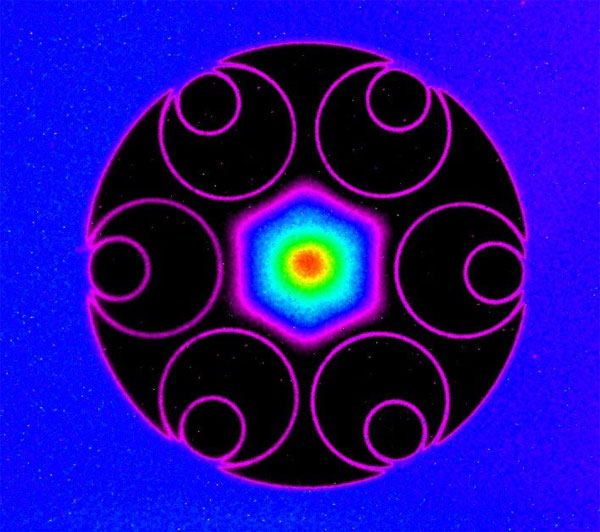
Hollow-Core Fiber Technology Shows Low Loss, Longer Transmission
SOUTHAMPTON, England, Sept. 30, 2019 — The Optoelectronics Research Centre (ORC) at the University of Southampton has further advanced hollow-core fiber technology, a potential alternative to traditional optical fibers. At the 2019 European Conference on Optical Communication in Dublin, the researchers showed hollow-core Nested Antiresonant Nodeless Fibre (NANF) with a loss of 0.65 dB/km across the full C and L telecommunication bands. A data transmission test, performed to confirm the team’s achievement, reported the longest hollow-core fiber transmission on record, reaching 340 km.
In hollow-core fibers, the glass in the core of the fiber is replaced by a gas or vacuum, giving the fiber a “holey” center. Hollow-core fibers allow faster light speed and thus less information delay than glass-based fibers. They also have the potential for lower loss and higher data transmission capacity than the all-solid glass optical fibers in use today.
Beyond communications, hollow-core fibers could lead to new ways to make, break, and fix things using intense laser light delivered to the work piece by exploiting the fibers’ optical power-handling properties. Hollow-core fiber technology could provide new ways to sense and monitor the environment by exploiting the strong interaction of light with gases confined in the hollow core. Hollow-core technology could also allow improved imaging and treatment of diseased tissue through the delivery of intense laser beams deep into the body.

Microscope image showing light trapped in and guided along the air-filled core of a hollow-core fiber by thin, glass-based, hollow cylinders that act like the bars of a cage. Courtesy of S.R. Sandoghchi.
“Hollow-core fibers have many advantages over standard telecommunications fibers that criss-cross the world today,” Sir David Payne, director of ORC, said. “The transit time is less, and they do not suffer nonlinear impairments, because light travels extremely effectively in air. Up to now, air-core fibers have struggled to match the losses exhibited by silica. These incredibly impressive results show we are now within stabbing distance of a challenge to conventional fibers.”
Professor Francesco Poletti said the team has shown that there are no fundamental limitations that would prevent the use of hollow-core fibers for long-range data transmission. “After some celebrations, we have already set ourselves the new target of matching the attenuation of solid fibers, which is on our short- to midterm horizon,” he said.
Published: September 2019